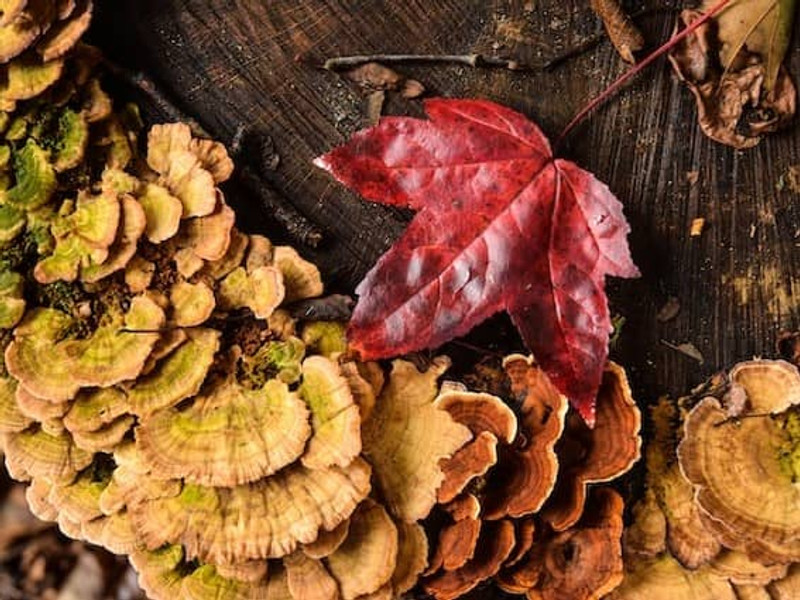An Easy Guide to Mushroom Inoculation
Posted by Troy Cosky, Founder FunGuy Grow Supply on 27th May 2023
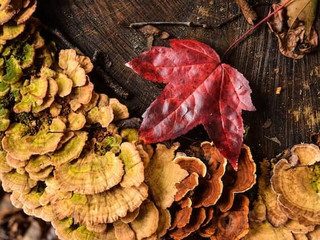
Mushroom Inoculation Guide: A Complete Step-by-Step Process to Successful Cultivation
Are you ready to embark on a rewarding journey into the world of mushroom cultivation? Look no further! This complete guide is here to provide you with a step-by-step process for successful mushroom inoculation. By choosing the right trees, learning from previous successes, and following our easy-to-follow instructions, you'll be on your way to cultivating your very own mushrooms in no time. Get ready to experience the joy of growing your delicious fungi!
Key Takeaways
- Inoculation of Mushrooms involves introducing mushroom spores or spawn plugs into suitable growing mediums.
- Choosing the right trees is important for successful mushroom growth.
- Different mushrooms thrive on different types of trees.
- This inoculation process involves preparing the log, drilling holes, inserting spawn plugs, and creating an optimal environment for growth.
Introduction to Mushroom Inoculation
In this section, we will explore the key principles of mushroom inoculation and how it can benefit your cultivation endeavors. Mushroom inoculation is the process of introducing mushroom spores or plugs spawn into suitable growing mediums, such as mushroom logs. This process is crucial for successful mushroom cultivation, as it ensures the growth and development of healthy mushrooms.
The mushroom inoculation process begins with selecting the right logs for your project. It is important to choose logs from healthy trees that are not infected or diseased. Once you have the right logs, you will need to prepare them for inoculation. This involves cleaning the logs and creating suitable conditions for mushroom growth.
Next, you will need to drill holes into the logs and insert mushroom spawn plugs. These plugs contain mushroom spores or mycelium, which will colonize the log and eventually produce mushrooms. After inserting the plugs, you will need to seal the points with wax to prevent contamination and retain moisture.
Tagging the logs is the final step in the mushroom inoculation process. By tagging the logs, you can keep track of the date and type of mushroom spawn used. This information will be valuable later on when monitoring the growth and development of your mushrooms.
Understanding the principles of mushroom inoculation is crucial for successful cultivation. By following the proper procedures and using high-quality mushroom spawn plugs, you can ensure the growth of healthy and abundant mushrooms. Now that we have covered the basics of mushroom inoculation, let's move on to the importance of choosing the right trees for this process.
The Importance of Choosing the Right Trees for Mushroom Inoculation
Choose the appropriate trees to ensure successful mushroom inoculation. When it comes to growing mushrooms in logs, the choice of tree species is critical. Opt for "wastewood," which refers to trees that are less useful for other purposes like firewood or construction. Deciduous trees are ideal as they yield excellent results and are readily available in most regions. While it's not necessary to limit yourself to specific species, considering ones like hackberries that are receptive to various fungi can be beneficial.
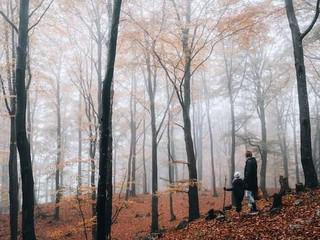
Before acquiring any logs, thoroughly inspect them for signs of decay or infection by other fungi that could compete with the desired mushrooms. Look for healthy and sturdy wood without cracks or soft spots. Ideally, choose logs with a diameter between 3' and 8'. This size provides enough space for plugs and spawns without creating excessive biomass that could hinder proper fruiting later on. Keep in mind that larger logs offer greater longevity but may be more challenging to handle and require more resources. On the other hand, smaller logs offer convenience but have shorter lifespans due to faster drying times.
Consider any potential limitations, whether natural or artificial, before making your selection. Consistent moisture levels and optimal growth conditions are crucial for colonization and mushroom development. If you can't maintain these conditions, it can affect the success of your cultivation.
Learning from Previous Successful Inoculations: Different Trees, Different Mushrooms
Did you notice any patterns in the growth of different mushroom varieties when inoculated on various tree species during previous successful inoculations? It's fascinating to see how different types of mushrooms thrive on different trees. Here are some observations that might surprise you:

- Oyster mushrooms love poplar and red alder trees because they absorb water quickly, resulting in robust growth.
- Shiitake mushrooms have a preference for older, more decayed wood, while other strains fare better on fresher wood.
- White button mushrooms flourish when inoculated onto straw bales placed near deciduous trees.
- Maple trees seem to be a favorite among reishi mushrooms, producing impressive yields.
- Hackberries provide an excellent habitat for shiitake mushrooms, with their unique properties supporting healthy growth.
By learning from these successful inoculations on different tree species, we can gain valuable insights into how to optimize our current season's mushroom growth. Understanding the preferences of different mushroom varieties and matching them with suitable tree species can lead to higher success rates and bountiful harvests.
Now that we've explored the patterns and observations from previous successful inoculations, let's dive into the mushroom inoculation process: a step-by-step guide. With this guide, you'll gain the knowledge and techniques necessary to cultivate your mushrooms and enjoy the rewards of a thriving mushroom garden. So, let's get started on this exciting journey!
The Mushroom Inoculation Process: A Step-By-Step Guide
Now let's move on to the exciting part - the mushroom inoculation process! First, you'll need to prepare the log by removing any loose bark and cleaning it thoroughly. Then, you'll drill holes into the log and insert the mushroom plugs, making sure to space them out evenly. Finally, you'll seal the inoculation points with wax to protect the spawn and create the optimal environment for growth.
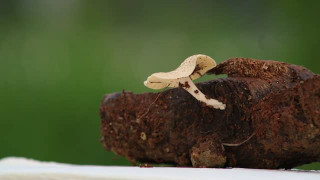
Preparing the Log for Inoculation
To ensure successful cultivation, proper preparation of the log is essential for inoculation of mushrooms. Start by removing any bark or outer layers that may hinder the drilling process. Be careful not to remove too much bark, as it plays a crucial role in retaining moisture. Once the log is smooth enough, it is ready for the next step in the inoculation process. Here are five key points to consider during log preparation:
- Be gentle: Treat the log with care to avoid damaging its structure.
- Remove obstacles: Clear away any debris or branches that may impede the drilling process.
- Maintain moisture: Ensure the log is adequately hydrated before inoculation.
- Choose the right log: Select a log from a hardwood tree species that is compatible with the mushroom variety you wish to cultivate.
- Inspect for pests: Check the log for signs of infestation, as pests can harm the growing mushrooms.
Following these steps will help create an optimal environment for successful mushroom cultivation.
Drilling Holes and Inserting Mushroom Spawn Plugs
To proceed with the mushroom inoculation process, carefully position your drill over the prepared log, ready to create the necessary holes for inserting the mushroom spawn plugs. The depth and spacing of the holes are crucial for optimal mushroom growth. For most species, drill between 1/4th and 1 inch deep, but for shiitake mushrooms, go deeper at 2 inches.
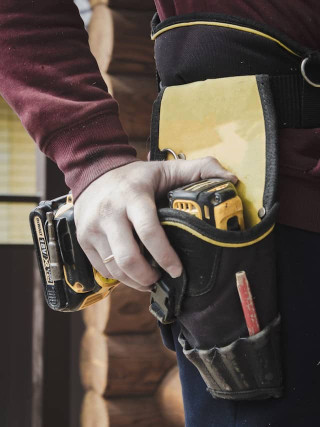
Make sure to maintain a distance of at least 6 inches between each plug. Remember to wear gloves to protect yourself while handling the mushroom plug spawn. Another important factor is the moisture content of the plugs. Whether they are pre-dampened or soaked, ensure they have enough moisture before insertion. Now, let's move on to the exciting part of inserting the mushroom spawn into the holes you've just drilled.
Inoculation Points with Wax
Seal the inoculation points with wax to create an airtight barrier against contamination and promote the colonization of mycelium. This simple step is crucial in ensuring the success of your mushroom cultivation. By sealing the points with wax, you are safeguarding your precious mycelium from unwanted organisms, allowing it to thrive in a controlled environment.
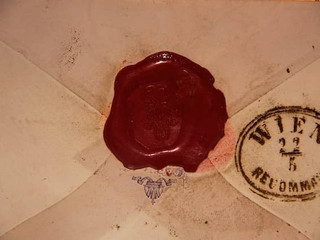
As you apply the wax, imagine the satisfaction of knowing that you are taking proactive measures to protect your mushrooms. Feel the excitement of watching your hard work pay off as the mycelium colonizes and spreads throughout the sealed zones. Embrace the sense of accomplishment as you create a barrier that will shield your mushrooms from potential harm. Celebrate the progress you are making on your journey to successful mushroom cultivation.
The Importance of Proper Tagging and Tracking in Mushroom Cultivation
Proper tagging and tracking are essential for successful mushroom cultivation as they allow you to monitor the growth and performance of each log throughout the cultivation process. When cultivating multiple logs with different mushroom species, it can be challenging to keep track of their progress. By using proper tags and tracking techniques, you can easily differentiate between the different strains and ensure optimal growing conditions for each. For example, Shiitake mushrooms have a longer incubation period than Oyster mushrooms. With proper labeling, you can accurately determine when each species should start producing mushrooms.
Not only does proper tagging help you differentiate between different mushroom strains, but it also allows you to keep track of each log's performance over time. By monitoring the logs, you can identify when they need watering or if any issues arise during the growth process. It is crucial to choose durable tags made of materials like metal or plastic that can withstand weather damage, such as rain or heat exposure. Additionally, using waterproof ink pens with large lettering ensures that the labels remain clear and legible throughout the entire life cycle of your mushrooms.
![]()
Consistency is key when it comes to labeling and tracking your logs. Developing a numbering system and assigning an individual identification number to each log will help you keep track of their progress accurately. Recording data in a logbook alongside the numbered tags is also recommended. This way, you can take notes on each tag's growth patterns and gain insight into which logs perform better at different times of the year.
Preserving the tags is just as important as tagging itself. Using UV-resistant pen ink and embedding the tags within several layers of durable duct tape, such as Gorilla brand duct tape, offers better protection against water damage, fading due to sun exposure, and other environmental factors. By following these simple steps, you can ensure that you have a clear understanding of each log's progress and make informed decisions throughout the cultivation process.
Post-Inoculation Care: Ensuring Success in Mushroom Cultivation
Now that you have completed the mushroom log cultivation, it is important to focus on post-inoculation care to ensure the success of your mushroom cultivation. Creating a suitable base for your logs will provide the necessary conditions for healthy mushroom growth. Effective stacking techniques will optimize air circulation and promote colonization. Additionally, proper moisture management is crucial for maintaining the ideal environment for your mushrooms to thrive.

Creating a Suitable Base for Your Logs
Place your logs on a sturdy base, such as concrete blocks, bricks, or pallets, to protect them from contamination and ensure the success of your mushroom cultivation. A suitable base is crucial for maintaining the ideal growing conditions for your mushrooms. Here are five reasons why a proper base is essential:
- Prevents contamination: By elevating your logs, you minimize the risk of contamination from unwanted fungi or bacteria.
- Improves air circulation: A sturdy base allows for better airflow around the logs, promoting healthy mushroom growth.
- Reduces moisture retention: Elevating the logs prevents excessive moisture buildup, preventing rot and mold formation.
- Enhances accessibility: Placing the logs at waist height makes it easier to monitor and tend to your mushrooms.
- Protects against pests: Elevating the logs discourages pests like slugs and snails from reaching the mushrooms.
Effective Stacking Techniques for Inoculated Logs
To ensure the success of your mushroom cultivation, it is important to carefully stack your inoculated logs using effective techniques. The method you choose will depend on factors like space availability and the number of logs you have. Whether you stack them vertically or horizontally, make sure to avoid soil splashback, as it can introduce harmful fungi contaminants.

Additionally, if you are cultivating multiple varieties of mushrooms, it is advisable to keep track of the different species growing in each log. This tracking will help you harvest mushrooms at their peak flush and not miss any hidden treasures. Now that you have stacked your logs, it's time to move on to the next step: moisture management, which is essential for healthy mushroom growth.
Moisture Management: Essential for Healthy Mushroom Growth
Now after the log inoculation, it's crucial to focus on keeping them moist for healthy mushroom growth. Maintaining the right level of moisture is essential to prevent drying out and ensure optimal conditions for mycelium development. Let's explore the importance of keeping the log moist, the recommended location and conditions for log placement, and the estimated time frame for mushroom growth.

A. Importance of Keeping Log Moist
To ensure healthy mushroom growth, you must maintain proper moisture levels in the log where mycelium has taken hold. Failure to do so can negatively impact your harvest potential. Here are some reasons why keeping the log moist is important:
- Adequate moisture promotes mycelium growth and colonization.
- Moist conditions create a favorable environment for fruiting.
- Proper hydration helps prevent the log from drying out and becoming unproductive.
- Consistent moisture levels support the development of robust and flavorful mushrooms.
- Maintaining moisture helps prevent contamination and disease, ensuring a successful cultivation process.
B. Recommended Location and Conditions for Log Placement
Properly placing the inoculated logs is essential for the successful cultivation of mushrooms, so you must carefully consider the location and environmental conditions for their placement. Choose shaded areas with filtered sunlight, like forest environments with dappled light. Make sure there is proper airflow around the logs to prevent mold overgrowth. Stagnant air can lead to excess moisture buildup when humidity exceeds 60%. Additionally, be vigilant about pests like snails attracted to the mushrooms, as they can quickly infest the logs if not addressed promptly.
C. Estimated Time-Frame for Mushroom Growth Varies by Species
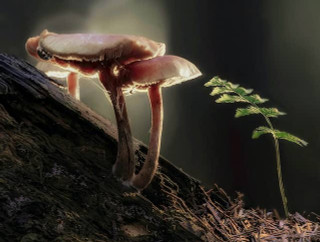
Ensuring successful mushroom cultivation requires carefully managing moisture for healthy mushroom growth. The estimated time frame for mushroom growth varies depending on the species. Here are some examples:
- Oyster mushrooms: 8-12 weeks minimum to fruit
- Shiitake variants: 6-8 months for initial growth
- Wine caps: as few as two months under optimal conditions
Knowing the approximate time it takes for your mushrooms to grow can help you plan and anticipate the harvest, adding excitement and satisfaction to your cultivation journey.
Conclusion: The Rewarding Journey of Mushroom Inoculation
As you reflect on your journey of mushroom inoculation, you will come to appreciate the rewarding experiences and knowledge gained along the way. The process of cultivating mushrooms, from selecting the right trees to caring for them post-inoculation, is not only fulfilling but also provides a deep understanding of the intricacies of nature.
Throughout this guide, you have learned the importance of patience, diligence, and attention to detail in mushroom cultivation. These qualities have not only led to a bountiful harvest but have also instilled in you a sense of accomplishment and satisfaction. The journey of mushroom inoculation has allowed you to witness the miracle of mushrooms sprouting in your garden beds or containers.
By following the guidelines and insights shared in this guide, you have gained the confidence to explore the world of fungi and embrace the nature that surrounds you. The knowledge you have acquired enables you to tap into the abundant protein-rich source that home-grown mushrooms offer.
As you continue on this journey, remember to utilize the plethora of resources available to you, such as online materials, books from experienced growers, and local mushroom clubs or societies. Adaptability and versatility will be your greatest allies, as each environment requires unique approaches.
Frequently Asked Questions
Can I Use Any Type of Tree for Mushroom Inoculation?
Can you use any type of tree for mushroom inoculation? Yes, you can use various types of trees for mushroom inoculation, but it depends on the specific species of mushrooms you are trying to cultivate. Different mushroom species have different preferences for the type of wood they grow on. Some common types of trees used for mushroom inoculation include oak, maple, birch, and poplar. It is important to research and select the appropriate tree species for successful mushroom cultivation.
How Long Does It Typically Take for Mushrooms to Start Growing After Inoculation?
Typically, mushrooms take around 1-2 weeks to start growing after inoculation. During this time, the mycelium needs to colonize the substrate and establish a network of roots. Factors such as temperature, humidity, and the specific species of mushroom can also affect the growth rate. It's important to monitor these conditions closely and provide the optimal environment for the mushrooms to thrive. With patience and proper care, you'll soon have a bountiful harvest of delicious mushrooms!
What Are Some Common Mistakes to Avoid During the Mushroom Inoculation Process?
When inoculating mushrooms, it's important to avoid common mistakes that can hinder the process. One mistake to avoid is not sterilizing your equipment properly, which can lead to contamination. Another mistake is not following the recommended temperature and humidity levels, as this can affect the growth of the mushrooms. Additionally, be careful not to overcrowd the inoculation area, as this can also increase the risk of contamination. By being mindful of these mistakes, you can increase your chances of successful mushroom cultivation.
Is It Possible to Successfully Inoculate Mushrooms Indoors?
Yes, you can successfully inoculate mushrooms indoors. By following proper procedures and maintaining the right conditions, you can create a suitable environment for mushroom cultivation. It is important to choose the right substrate, sterilize your equipment, and handle the inoculation process with care. Keep in mind factors like temperature, humidity, and lighting to ensure optimal growth. With attention to detail and patience, you can enjoy a successful indoor mushroom cultivation experience.
How Do I Know if My Mushroom Inoculation Was Successful?
To know if your mushroom inoculation was successful, there are a few signs to look out for. First, you should see white mycelium growing on the substrate. This indicates that the spores or spawn have successfully colonized the growing medium. Additionally, you may notice a sweet, earthy smell coming from the substrate, which is a good sign of healthy and fresh mushroom growth. Finally, the appearance of small pinheads or primordia is a clear indication that your inoculation was successful.

